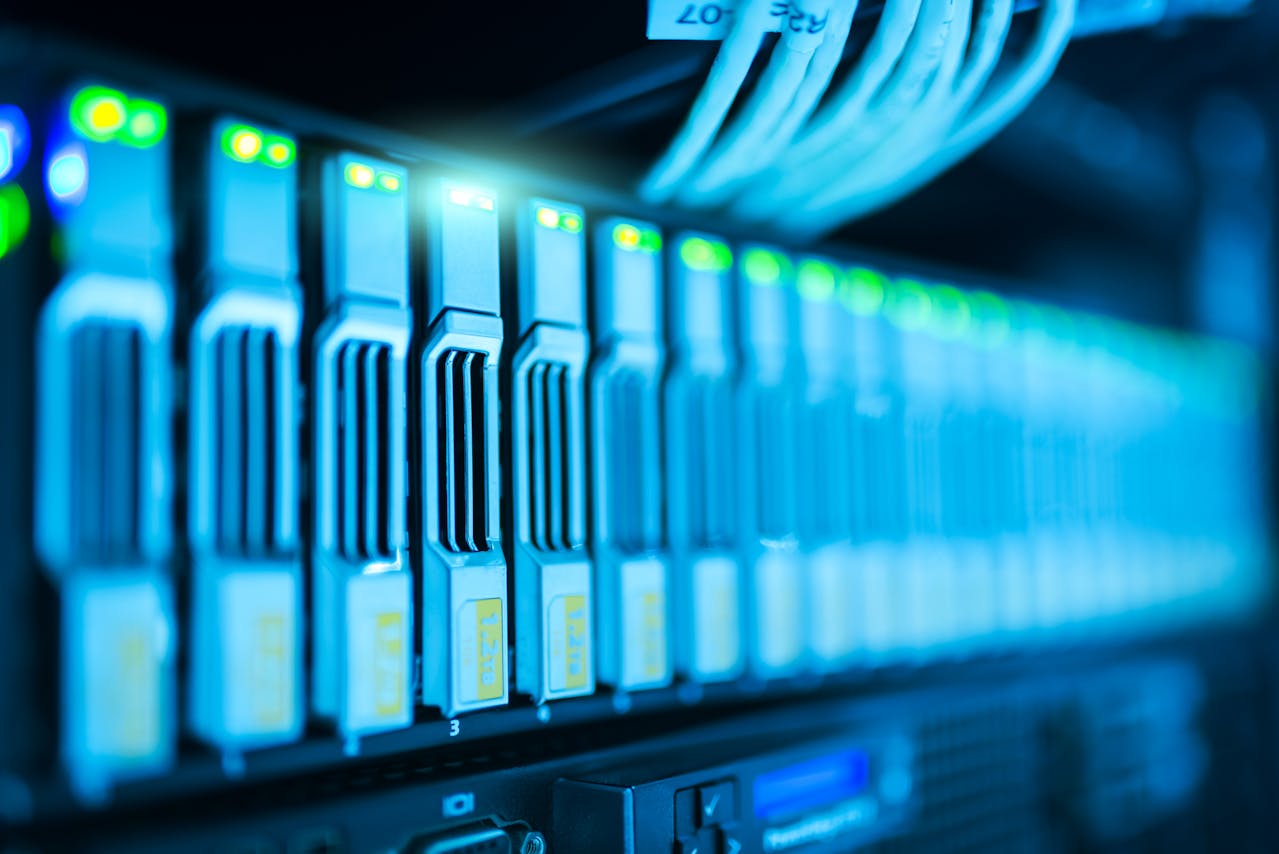Introduction
The internet has evolved from dial-up connections to always-on broadband and mobile networks that power nearly every aspect of our daily lives. But we’re only at the beginning of what’s possible. As technologies like 5G, 6G, edge computing, and satellite internet mature, the future of connectivity promises to be faster, smarter, and more inclusive than ever before.
In this article, we’ll explore where internet technology is headed, what’s driving the shift, and how it will reshape communication, commerce, education, and daily life.
The Evolution of Connectivity: A Quick Overview
From Dial-Up to Broadband
The internet’s first phase was defined by dial-up access—slow, noisy, and barely usable for more than simple web browsing. The shift to broadband opened the door to richer content and streaming, transforming how we consume media and interact online.
The Rise of Mobile Internet
With the rollout of 3G and 4G, internet access became portable, bringing social media, mobile apps, and e-commerce into our pockets. This ushered in the age of always-connected living.
Now: The 5G Era
5G technology brought not just speed, but low latency and massive bandwidth—supporting everything from real-time gaming to connected cars and smart cities. It’s the infrastructure that will support the future internet.
What’s Next: The Future of Internet Technology
6G and the Next Generation of Speed
6G is already in development, promising speeds 100x faster than 5G, near-instant data transmission, and support for technologies like holographic communication and ultra-realistic virtual experiences. Expected around 2030, 6G will further erase the boundaries between physical and digital.
Satellite Internet & Global Coverage
Low Earth Orbit (LEO) satellite networks are changing the game for rural and underserved regions. Services that beam internet from space will make high-speed connectivity accessible globally, not just in major cities.
Edge Computing & Real-Time Applications
Edge computing processes data closer to the source, reducing latency and enabling real-time responses. This will empower advancements in autonomous vehicles, healthcare, manufacturing, and smart home technology.
Mesh Networks and Decentralized Connectivity
New models like mesh networks could allow devices to communicate directly with each other, bypassing traditional internet infrastructure. This is especially useful in disaster zones or remote areas.
The Internet of Everything
Smart Cities
Urban infrastructure will increasingly rely on connected sensors and systems to manage traffic, utilities, safety, and public services. The internet will be the nervous system of the city, optimizing energy use, reducing congestion, and improving quality of life.
Connected Homes and Devices
From thermostats and refrigerators to security systems and wearables, the smart home ecosystem is rapidly growing. The future will bring even tighter integration between devices and more intuitive user control.
Autonomous Vehicles and Drones
Vehicles will not only connect to the internet but to each other. This “vehicle-to-everything” (V2X) communication will reduce traffic accidents, optimize logistics, and streamline transportation systems.
Key Challenges to Overcome
Digital Divide and Accessibility
Despite progress, billions remain unconnected. Bridging the digital divide—through infrastructure, affordability, and digital literacy—will be essential for true global connectivity.
Cybersecurity and Privacy
More devices online means a broader attack surface. As the internet becomes more embedded in our lives, securing personal data and system integrity will be more critical than ever.
Environmental Impact
More infrastructure means more energy use. Future connectivity must prioritize green tech, energy-efficient data centers, and sustainable hardware to reduce environmental impact.
Web3, Decentralization, and the Future of the Web
From Web2 to Web3
The internet is shifting from a centralized model to a more decentralized structure, where users control their own data and identity. Web3, built on blockchain and peer-to-peer protocols, promises more transparency and user empowerment.
Digital Identity and Ownership
Future internet interactions may revolve around self-sovereign identity, allowing users to verify who they are, control access to their data, and own their digital assets.
AI-Driven Personalization
The future web will use artificial intelligence to provide hyper-personalized content, search results, and digital experiences—streamlining workflows and improving accessibility.
What It Means for You
For Individuals
You’ll experience faster, more reliable internet—wherever you go. Whether streaming content, attending a virtual class, or working remotely, the future of connectivity will bring smoother and more immersive experiences.
For Businesses
Organizations will tap into real-time data, automation, and global collaboration with minimal friction. Companies that embrace these changes will gain a significant competitive edge.
For Society
From improving emergency response to enabling remote surgeries and immersive education, better internet will bring innovation to every corner of life. However, this transformation must be inclusive, equitable, and secure.
Conclusion
The future of connectivity is about more than speed—it’s about access, intelligence, and experience. As 6G, satellite internet, smart infrastructure, and Web3 mature, the internet will become an invisible but ever-present part of our lives. The challenge will be ensuring that this hyperconnected future is one we all benefit from—securely, sustainably, and equally.
Now is the time to prepare—for individuals, businesses, and governments alike. Because the internet of the future isn’t just coming—it’s already taking shape.




Greetings,
Congratulations on launching your new website, breakingpaper.com! It looks great.
Noticed breakingpaper.com went live and it reminded me of a handy tool for new websites.
It’s basically a quick way to share contact info online easily, which can be helpful when you’re starting out. It’s quite different from paper cards as you can update it anytime.
Here’s the link in case it’s useful: https://livelead.online
If you need help with anything else for your new website, feel free to let me know.
Hope this helps!
All the best,
Kandi Himmel
Web Marketing Consultant
Hi,
I just visited breakingpaper.com and wondered if you’d ever thought about having an engaging video to explain what you do, or to be used on social media as a promotional tool?
Our prices start from just $195.
Let me know if you’re interested in seeing samples of our previous work.
Regards,
Joanna
Hi there,
We run a YouTube growth service, which increases your number of subscribers both safely and practically.
– Gain 700-1500+ real, human subscribers who subscribe because they are interested in your channel/videos.
– All actions are made manually by our team. We do not use any ‘bots’.
– Channel Creation: If you haven’t started your YouTube journey yet, we can create a professional channel for you as part of your initial order.
The price is just $60 (USD) per month, and we can start immediately.
If you have any questions, let me know, and we can discuss further.
Kind regards,
Jess
Hi,
I just visited breakingpaper.com and wondered if you’ve ever considered an impactful video to advertise your business? Our videos can generate impressive results on both your website and across social media.
We specialize in creating both animated and non-animated videos, with prices starting from just $195 (USD).
Our approach combines high-quality stock animations and footage with your own content (like existing clips, photos, and images). This allows us to produce professional, engaging videos affordably, without the need for on-location live filming.
Would you be open to seeing some examples of our previous work?
If this isn’t the right time or fit for you, please feel free to use the unsubscribe link below to opt-out of future communications.
Regards,
Jo
Unsubscribe: https://removeme.live/ev/unsubscribe.php?d=breakingpaper.com
Hi,
I’m Manshi, working as an SEO Manager with 8 years of experience in this field.
I checked your website you have an impressive site but ranking is not good on Google, Yahoo and Bing.
Let me know if you are interested, I will send you our SEO Packages and price list.
May I send a quote! if interested?
Thank You!
Manshi Sharma
SEO Expert
Hi,
I visited breakingpaper.com and noticed you use WordPress.
We’ve created a quick, no-fluff ebook to help WordPress site owners like you strengthen security, boost SEO, and improve performance. It also covers common mistakes to avoid and how to get your site ready to scale.
Here’s what you’ll get:
Tips to lock down your site with SSL & firewall
SEO tweaks for better visibility
Speed upgrades with hosting & theme advice
A checklist to avoid common WordPress pitfalls
10 steps to future-proof your site for growth
… and more.
Download it here:
👉 https://furtherinfo.info/wpcl
Best,
Diana
Hi,
I just visited breakingpaper.com and wondered if you’d ever thought about having an engaging video to explain what you do?
Our prices start from just $195 (USD).
A couple of samples to check out for a Service and a Product:
https://www.youtube.com/watch?v=wrsNa_uRLGY
https://www.youtube.com/watch?v=8S4l8_bgcnc
Let me know if you’re interested in seeing more samples of our previous work or have any questions.
Regards,
Joanna
Hi there,
We run a Youtube growth service, where we can increase your subscriber count safely and practically.
– Gain 700-1500+ real, human subscribers who subscribe because they are interested in your channel/videos.
– Safe: All actions are done, without using any automated tasks / bots.
– Channel Creation: If you haven’t started your YouTube journey yet, we can create a professional channel for you as part of your initial order.
Our price is just $60 (USD) per month and we can start immediately.
Would a free trial be of interest?
Kind regards,
Jess
Hi,
I checked your website and noticed a few issues that might be hurting your Google rankings — like:
Low visibility for key search terms
Weak or missing Calls-to-Action (CTAs)
Slow page speed or lack of mobile optimization
These gaps often lead to missed traffic, fewer leads, and lower conversions.
I’d love to offer you a free SEO + CTA audit to identify what’s holding your site back — and how to fix it.
Should I send the report over this week?
Best regards,
Manshi Sharma
WebxTalk Pvt. Ltd.
Hi,
Are you looking to launch a new YouTube channel or struggling to get the growth you want from your current one? It can be tough to know exactly where to focus your efforts.
That’s why we’ve put together the FREE “TubeLaunch Blueprint” – a straightforward guide packed with actionable strategies to help you build and scale a successful YouTube channel.
Download here: https://furtherinfo.info/ebookyt
Inside, you’ll discover how to:
Set up a professional channel that instantly builds trust.
Define your niche and attract your ideal viewers.
Master YouTube SEO basics to get your videos discovered.
Create irresistible thumbnails that boost clicks.
Engage your audience and build a thriving community.
Ready to stop guessing and start growing strategically?
Download here: https://furtherinfo.info/ebookyt
This guide is designed to demystify the process and give you a clear roadmap to YouTube success.
Kind regards,
Lorrie
Opt-out of future emails: https://removeme.live/unsubscribe.php?d=breakingpaper.com
Hi there,
I’m reaching out because we’ve just released a complete WordPress video training package with unrestricted Private Label Rights. The package includes 19 professional video lessons across 4 courses, covering everything from WordPress basics to local development.
Key features:
Full PLR rights (rebrand, resell, repurpose as you wish)
4 complete courses with 19 video lessons
Professional production quality
Ready-to-launch sales materials included
This is ideal if you’re looking to quickly launch your own WordPress training business or add to your existing product line.
For detailed information and pricing, visit: https://furtherinfo.info/wpmk
Kind regards,
Kendrick
Hi,
Just had a look at your site – it’s well-designed, but not performing well in search engines.
Would you be interested in improving your SEO and getting more traffic?
I can send over a detailed proposal with affordable packages.
Warm regards,
Nikita